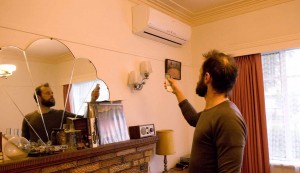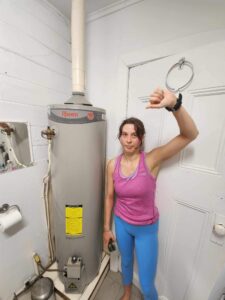The Victorian Government just updated their Gas Substitution Roadmap, outlining Victoria’s new suite of policies to transition away from gas. It’s the first time the Roadmap has been updated since it was first released in 2022. Below we explain what the Roadmap is, what it contains and what’s missing.
On this page…
- What is the problem with gas?
- Why do we need a Gas Substitution Roadmap?
- The beginning of the end for gas in homes and small businesses
- The government is closing loopholes for new homes
- Improving minimum standards for rentals
- New incentives to electrify
- The door is still open for new polluting gas projects
- People don’t understand the issue
- Government needs to lead by electrifying their own buildings
- What happens next?
What is the problem with gas?
Methane gas is a major climate polluter, and a primary source of Victoria’s emissions. It’s also an expensive energy source and dangerous for your health. Scientists estimate that burning gas in homes is responsible for 12% of childhood asthma cases in Australia.
Currently, 80% of Victorian homes are connected to the gas network, more than any other Australian State or Territory.
Why do we need a Gas Substitution Roadmap?
We have historically produced more gas than we consume, but that’s about to change. In the next three to four years there will be a rapid drop-off in supply available from Bass Strait. On top of that, the pipeline that connects Vic, NSW and Qld is already at full capacity.
So Victoria is facing a choice: either find new supply or get on with the job of moving away from gas via efficient electrification. Only one option will meet our climate targets, protect the environment and save us money, and that is to electrify Victoria.
The Victorian government has announced new responses in their updated Gas Substitution Roadmap.

Efficient electric appliances are better for the environment and your hip pocket!
The beginning of the end for gas in homes and small businesses
The updated Roadmap contains a new plan to investigate the costs and benefits of restricting new space heating, hot water and cooktop appliances to electric only.
Join our growing community of over 100,000 Victorians and learn how you can make a difference.
This approach will be very effective because in practice, when we need to replace a broken appliance, tradespeople tend to install like for like. The average household gas bill in Victoria went up by $500 last year alone, and reinstalling gas appliances locks in those increasingly high bills. Especially so for renters and social housing tenants who don’t get to choose.
Recent modelling by the Climateworks Centre has shown that electrification of households is not only necessary for limiting global heating to 1.5 °C, but also supports households to be provided with significantly cheaper electricity. Given that a typical gas appliance lasts 15 years, if we started replacing then now we would finish the job in the late 2030s – so we need to get cracking.
